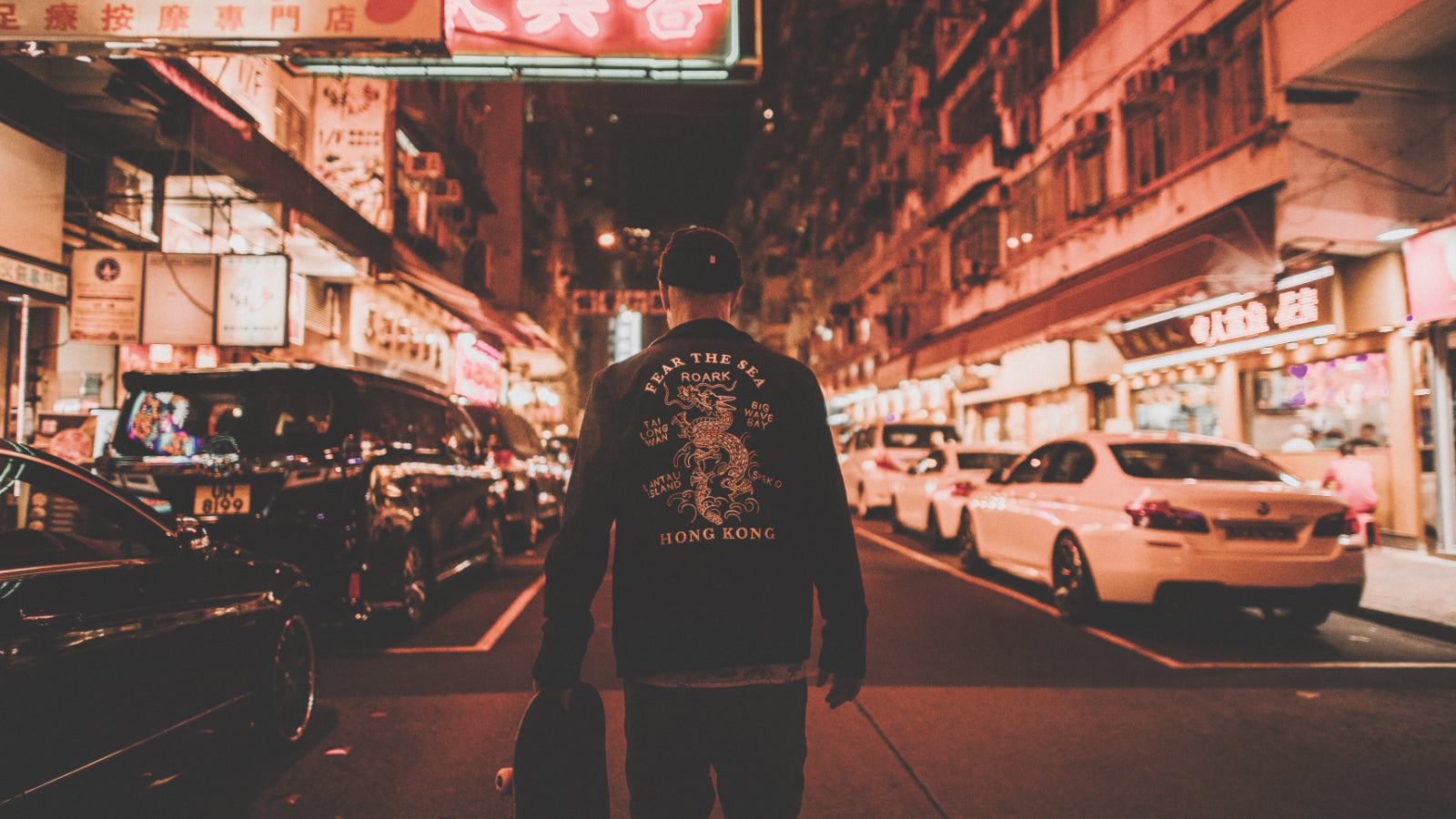Introducing the Star Crossed Tattoo Collaboration
By Beau Flemister

“I was an artist and after graduation worked at an ad agency but I just hated it. I just was a lot more into the punk rock scene and always just wanted to do tattoos because that was a big part of the culture. I knew if I could draw and make a living that way, I’d be happy. It all worked out, though, and I’ve been lucky to make a living doing what I love here in Hong Kong which is a dream.”
After a few nights camping on the Ninepin Islands, we returned to the bright lights of Hong Kong, finding the Star Crossed Tattoo shop up a few flights of stairs off Granville and Chatham Roads. Inside Star Crossed, beyond the tattoo art are shelves of books, photos, trinkets, toys, tchotchkes and tools in each artist’s respectful open office corner. I notice an illustrated series of gastropods drawn purely from penises and vaginas near the bathroom wall that struck my eye in particular.
The boys decided to get some ink done, certainly an enduring keepsake from this place to take home with them. Jamie — a traditional Chinese tiger, Elvis — a modern, stylized cubic tiger head, and Mikey — a Mexican eagle. Somewhere between the buzz of the gun, we got to talking with South African transplant and artist/co-owner, Ross Turpin.
STAR CROSSED BOMBER JACKET
The mid-weight cotton twill, poplin lined body and taffeta lined sleeved bomber will have the Cobra Kai running scared.

“Hong Kong has affected my creativity hugely, though. As far as my art, mostly with the Asian aesthetic, but also being here you have so much exposure with international artists passing through, so that helps my inspiration a whole lot.”
“Out on the street, though, here in Hong Kong there’s so much energy. Food and smells on every corner, and then not many people know how much jungle there is here. The Outer Islands are so close and so undeveloped. You can live outside of the city in nature away from the chaos, but then just go in for work or dining.”
“As far as tattoo aesthetic, though, Hong Kong is very unique because it does have some Americana influence from the military duing WW2, it may have even started here with American sailors. But then, dragons are so connected to Hong Kong culture too. They’re so ubiquitous. Trends move fast with tattoos, however. Personally, I love anything with a strong bold line that will last. I’m inspired mainly by American traditional tattoo and woodblock etching from traditional Asian culture.”

STAR CROSSED GRAPHIC TEES
Courtesy of artist Ross Turpin. Inspired by WWII bomber jackets in Hong Kong.

STAR CROSSED GRAPHIC TEES
Manufactured in conjunction with Narval wetsuits. 2MM textured smoothskin body and neoprene sleeves.

A Brief History of Tattooing From China to Hong Kong…
Pre-900CE: Tattooing has been around in China for thousands of years. Called Ci Shen, a term that means literally “puncturing the body,” the art has been known for ages, but for the most part was an uncommon practice. Throughout Chinese history tattooing was commonly seen as a defamation of the body, something undesirable or considered a barbaric practice, normally depicting bandits and folk heroes.
Song Dynasty: “Water Margin,” a major classical novel of Chinese literature, references tattooing in the 12th Century. The book tells the stories of bandits of Mount Liang, three of these characters referenced as having tattoos covering their entire bodies.
Ming Dynasty: Dulong and Dai tribes, along with the Li people of Hainan Island traditionally tattooed themselves. Many Dulang women at the time, who were often taken as slaves, tattooed their faces to repel potential captors from neighboring tribes. But even after attacks ceased over time, many women continued with the tradition of facial tattoos.
Among Dai men, tattoos were seen as a sign of strength and virility. Generally, tattoos were made in such a way as to accentuate and draw attention to their muscles. Tattooing among the Dai is still practiced to this day.
1930s: German ethnologist Hans Stubel studied the Li people on Hainan Island, and wrote extensively of their tattooing practices. During the 1930s few still wore facial tattoos, as tattooing was primarily on the arms and legs. Today, still some Li elderly women have traditional facial tattoos.
1940s: James Ho becomes Hong Kong’s very first tattoo artist, starting his studio, Rose Tattoo in Wan Chai. Mostly tattooing sailors and servicemen at the time, many wanted a mark if their bodies got lost on a battlefield. But as the tattooed sailors returned to their homeland, the tattoos were much appreciated by the Westerners and Hong Kong tattooing spread internationally.
Now: Many vibrant tattoo shops now exist in Hong Kong — like the renowned Star Crossed Tattoo shop — and tattooing’s stigma for bandits and outcasts is not nearly as strong as it once was.


















